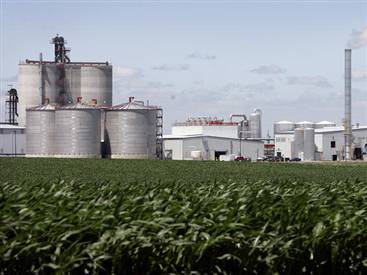Cleaner, Greener, Better
Just as farmers continue to find ways to improve their efficiencies on the farm, ethanol plants are doing much of the same in their refineries. According to a new study from the University of Illinois – Chicago which surveyed over half of the United States ethanol plants, the results revealed an increase in yields and a decrease in energy and water usage over the past five years.
- Ethanol yields have climbed from 2.78 to 2.82 gallons per bushel of corn
- Thermal energy use per gallon has declined by 9%
- Water usage per gallon of ethanol is also down from 2.72 gallons to 2.70
A newer product taking off in the ethanol industy is corn oil. The amount of corn oil being separated per bushel of corn has grown from .11 pounds per bushel in 2008 to .53 pounds per bushel in 2012. Corn oil has a number of uses, with the most notable being a popular feedstock for biodiesel as it has a low carbon intensity rating.
Even with that increase in corn oil extraction, the production of ethanol’s co-product distiller grains (high-protein livestock feed) remains nearly the same as plants seek to maximize their production of feed, fuel and now corn oil.
These improvements in efficiency are just another example of American innovation as hard-working folks find ways to further reduce ethanol’s carbon footprint and environmental impact. Ethanol now represents 10% of America’s fuel market and continues to create jobs, lessen greenhouse gas emissions, increase octane and save consumers money.

